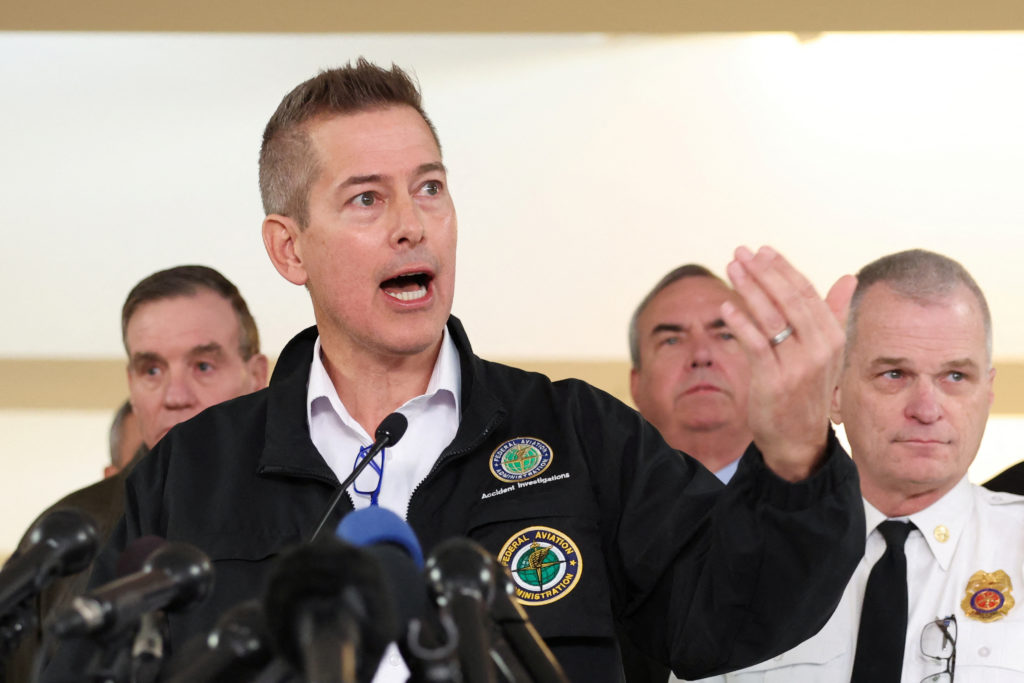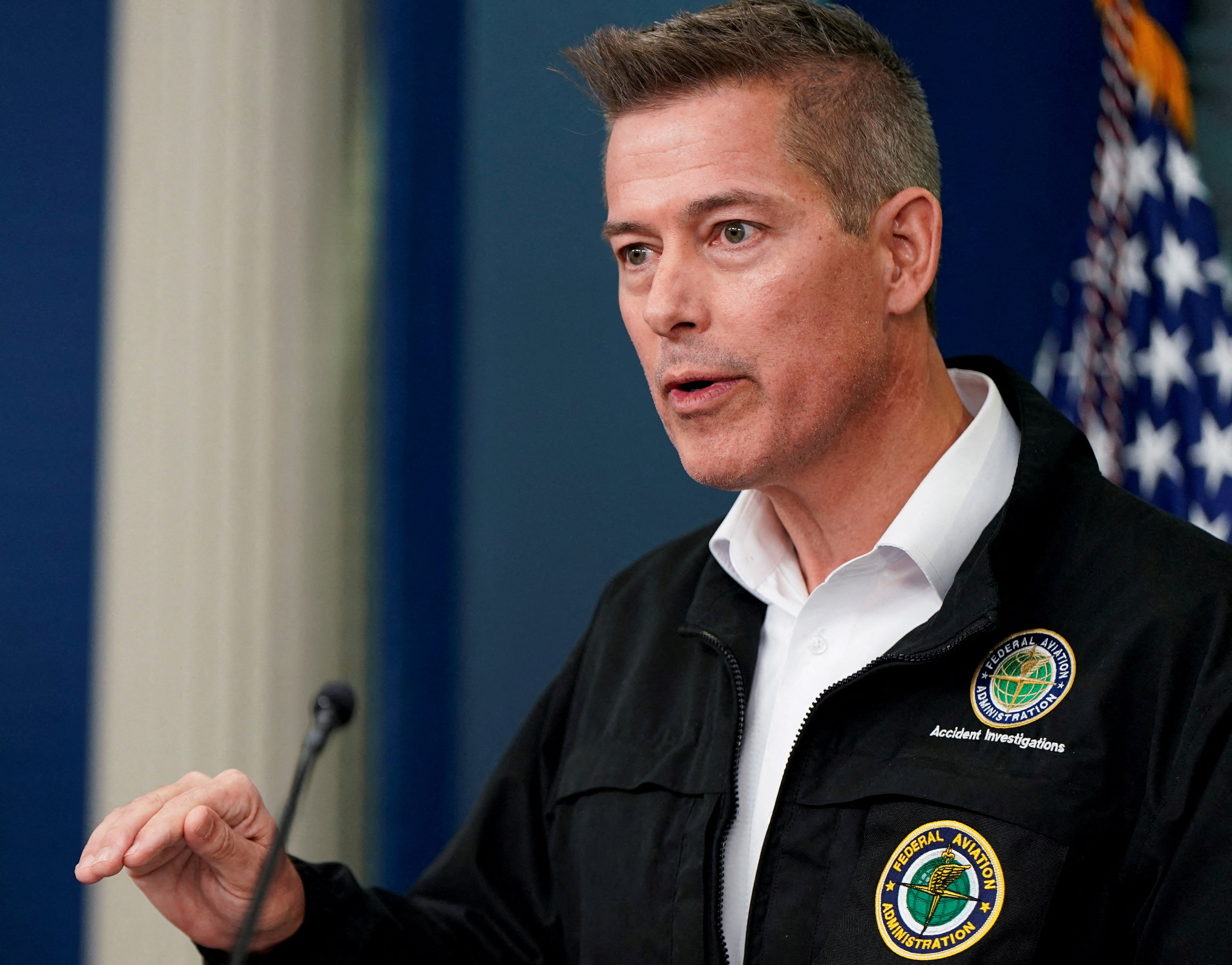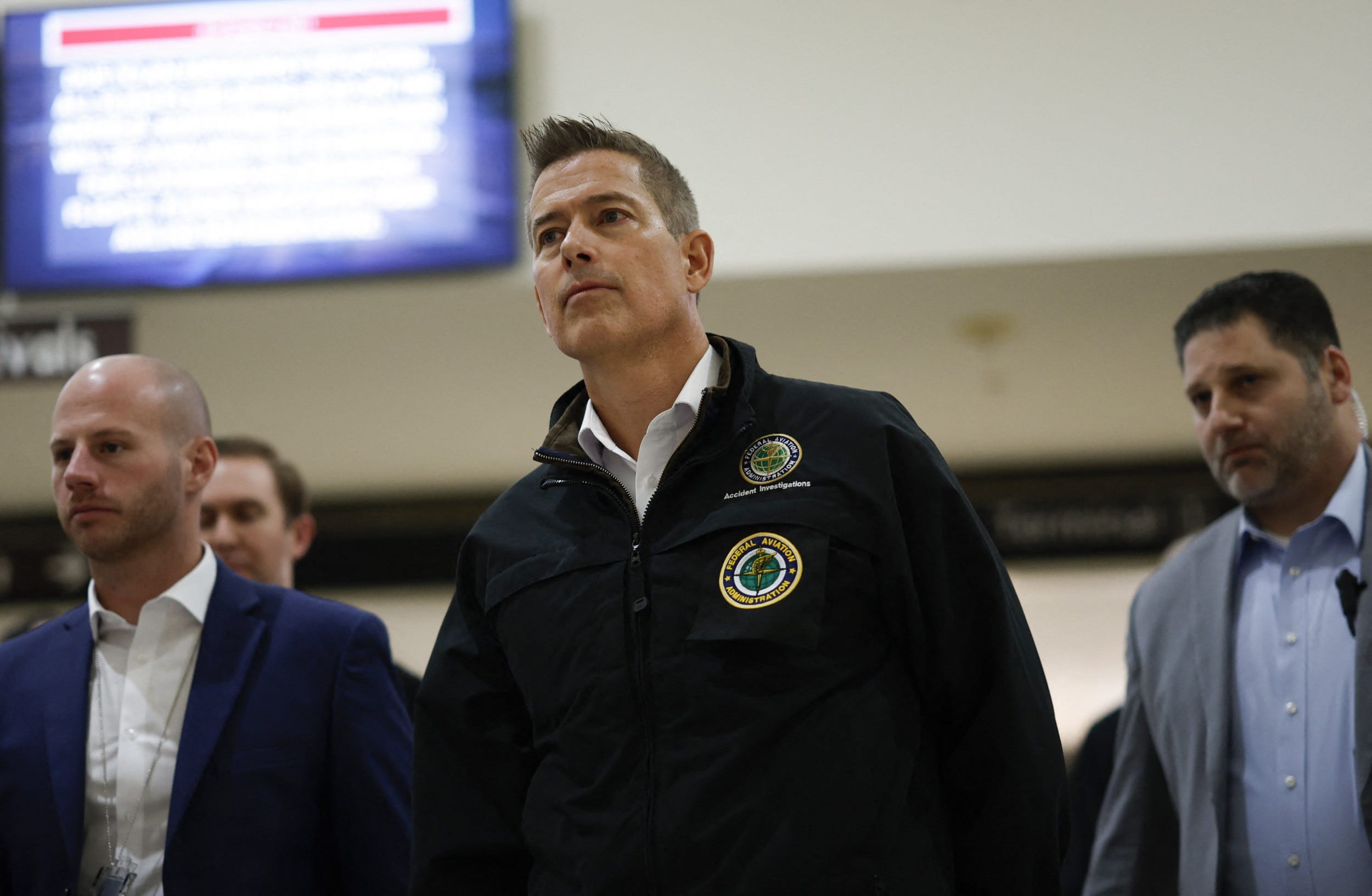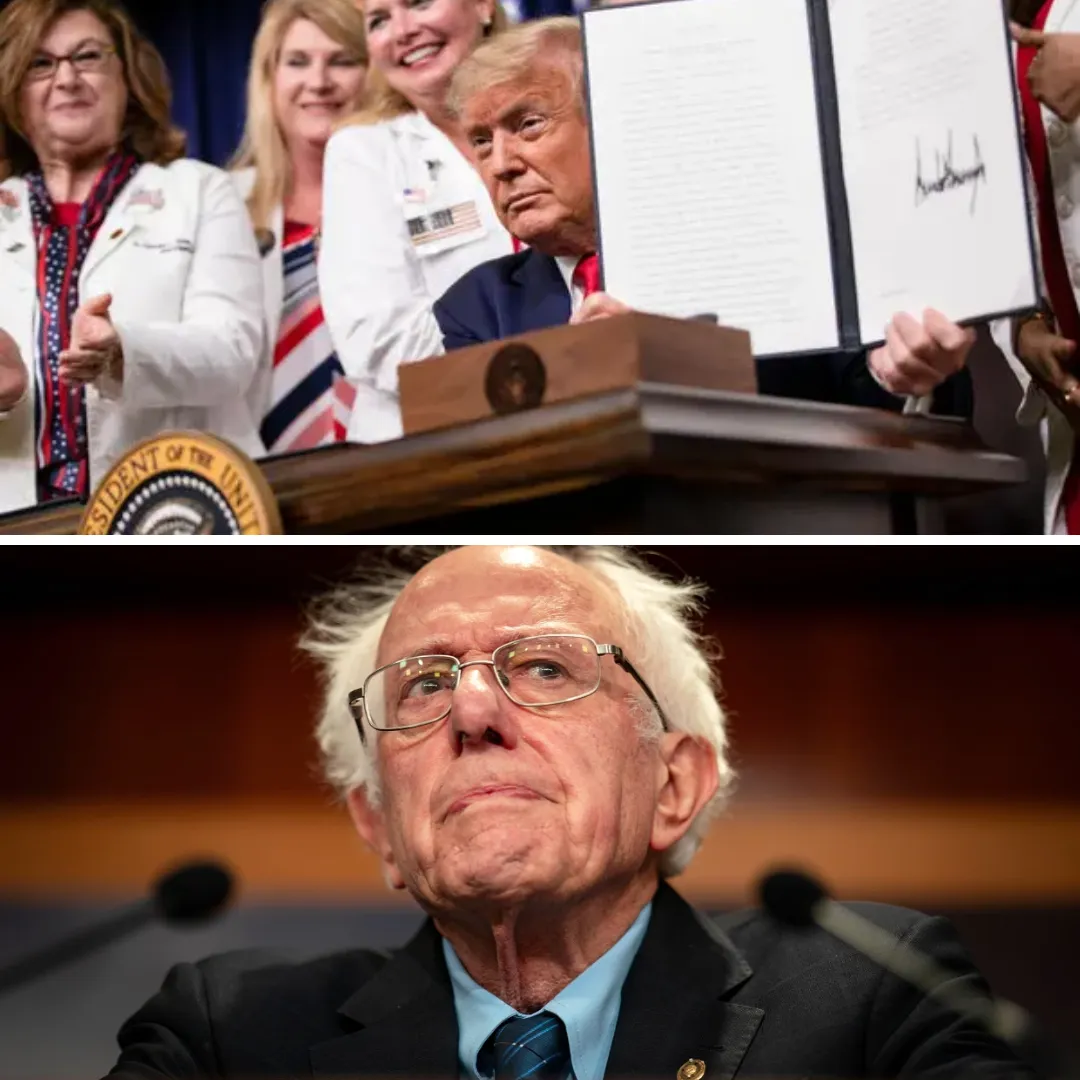
Transportation Secretary Sean Duffy sharply criticized the Department of Defense on Friday following an incident in which an Army helicopter forced two commercial airliners to perform go-arounds as they approached Reagan National Airport in Washington, D.C.
The disruption occurred Thursday afternoon, when air traffic controllers instructed a Delta Airlines flight and a Republic Airways plane to divert due to what was classified as a “Priority Air Transport helicopter inbound to the Pentagon Army Heliport,” according to information released by the Federal Aviation Administration. The flights were on final approach at the time.
Several outlets reported Friday that the helicopter in question was taking what officials later described as a “scenic route” near the airport — a maneuver that has now drawn bipartisan criticism and triggered federal investigations.
Duffy responded quickly, calling the incident “unacceptable” and accusing the Department of Defense of ignoring clear and recently reinforced airspace rules.
“Our helicopter restrictions around DCA are crystal clear,” Duffy wrote in a post on X. “In addition to investigations from @NTSB and @FAANews, I’ll be talking to the @DeptofDefense to ask why the hell our rules were disregarded.”
The use of the airspace near Reagan National has been under intense scrutiny since a deadly crash in January involving an Army Black Hawk helicopter and an American Airlines passenger plane resulted in 67 deaths.
That tragedy prompted new restrictions on helicopter activity near the airport, and officials had warned that civilian flight patterns needed to be treated with the utmost caution.
Duffy referenced the earlier crash in his post and demanded stricter enforcement.

“Safety must ALWAYS come first,” he wrote. “We just lost 67 souls! No more helicopter rides for VIPs or unnecessary training in a congested DCA airspace full of civilians. Take a taxi or Uber – besides, most VIPs have black car service.”
The Department of Defense has not yet issued a statement on the incident. According to the FAA, the incident took place at approximately 2:30 p.m. local time. The agency said that both aircraft completed their go-arounds safely and landed without further issue.
The event sparked immediate concern across Capitol Hill. Lawmakers from both parties criticized the military’s decision-making and demanded answers.
“I believe it’s time for the FAA to act swiftly and assert control over the national airspace so the Army stops running air taxis for military officials near Ronald Reagan Washington National Airport,” wrote Senator Ted Cruz of Texas on X.
Senator Maria Cantwell of Washington also weighed in, describing the event as “outrageous.” According to Reuters, she called for a full accounting of what led to the breakdown in protocol.
Senator Jerry Moran of Kansas echoed the concerns, stating, “The Army and FAA need to reevaluate their operations and return to Capitol Hill to explain what needs to be done to make certain the DCA airspace is safe. We already had a tragedy that should not have happened.”
Since the January crash, federal aviation officials have been under pressure to implement new safety protocols, especially related to the integration of military and civilian air traffic in and around major airports. The FAA has also been working to overhaul its hiring practices for air traffic controllers amid concerns of understaffing and outdated oversight structures.
The FAA and the National Transportation Safety Board are both expected to lead the investigation into Thursday’s near-incident. A preliminary report is expected within the coming weeks.

Spokespeople for both Delta Airlines and Republic Airways confirmed that they would cooperate fully with federal investigators. Neither airline reported injuries to passengers or crew, but both said they were concerned about the proximity of military aircraft in civilian airspace.
The incident also renews questions about the Army’s use of helicopters for high-level transportation in tightly regulated air corridors. Since January’s crash, calls have grown for the Department of Defense to minimize such flights unless absolutely necessary.
Privately, some FAA officials expressed frustration that the Pentagon had resumed operating in the area so soon after the restrictions were implemented. One source familiar with the situation said, “There’s a perception that the Army sees the rules as optional. That’s a dangerous mindset.”
The FAA declined to comment beyond confirming that an investigation is underway. The agency said it would work closely with all relevant parties to determine whether the helicopter’s flight path violated any directives or coordination protocols.
As the investigation proceeds, transportation safety advocates are urging swift action to ensure civilian passengers are not placed at unnecessary risk. Many pointed to the fact that the initial restriction, implemented in March, was designed specifically to prevent precisely this type of event — a near-collision in already congested airspace.
“This wasn’t an unforeseeable mishap,” said one retired pilot. “The warnings have been clear. That helicopter should never have been in that space at that time, especially not for anything resembling a ‘scenic’ route.”
Military air operations in civilian zones are typically coordinated with rigorous pre-flight planning and clearance protocols. However, Thursday’s incident appears to have caught both the FAA and commercial airlines off guard, leading to a scramble by air traffic controllers to reroute two incoming flights in real time.

The calls from lawmakers for the Pentagon to testify again on Capitol Hill suggest that a more direct confrontation may be looming over how the Defense Department has managed its operations in Washington-area airspace.
For now, both the FAA and the NTSB are collecting radar data, communications logs, and flight plans related to the incident. Lawmakers are also likely to seek transcripts of communications between air traffic controllers and the helicopter’s pilot.
With pressure mounting and public attention drawn back to aviation safety, Duffy’s Transportation Department is expected to play a central role in shaping new guidelines — and possibly new limits — on helicopter use near commercial airports.
As one senior transportation official noted, “The public needs to feel confident that when they fly into D.C., they’re not going to be suddenly rerouted because someone thought it was a nice day for a helicopter tour over the Pentagon.”



